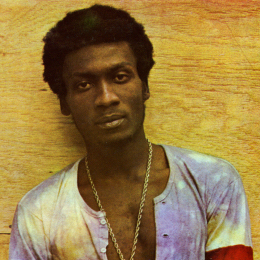Posts Tagged Jimmy Cliff
Song Structure 101
Posted by Gavin Bradley in Writing on June 14, 2009
Legend has it that Jane’s Addiction frontman Perry Farrell came up with ‘Been Caught Stealing’ specifically to prove he was capable of–though not particularly interested in–writing radio hits. Of course after the song spent four weeks at #1 and the band made the jump from college dorm buzz to a household name, Farrell had the resources to create Lollapalooza and retire back to writing whatever he felt like writing.
Formulaic writing gets a bad rap. Nobody wants to feel that the music they love was written in a calculated way, but I think it’s important to draw a distinction between upholding the tradition of the 3-minute pop song and completely reverse-engineering music based on market studies. The fact is, for better or worse, every one of us has been programmed to understand a couple of basic song structures.
The main one: Verse–Prechorus–Chorus–Verse–Prechorus–Chorus–Bridge–Chorus
Sometimes there’s a short intro. We expect the first verse to spell out what the song is going to be about. The prechorus that follows builds tension toward an anticipated payoff. The chorus is the catchy main idea that we’ve been waiting for–the repeated part that everyone can sing along to–and it usually contains the song title. (In olden times it was known as the ‘refrain’, and it’s more and more often referred to as the ‘hook’ in the age of hip hop.)
In the second verse the story continues to be told. Expect a new idea or a new perspective to be introduced, just when it might start getting boring. Lyrics are almost never repeated in verses. The prechorus that follows may contain the same words as the first, but it may be shortened to get to the second chorus faster. Next, three quarters of the way through the song, a bridge (or ‘b-section’) breaks the melodic pattern…it’s somewhere else to go for a moment. Sometimes solos are used in place of, or in addition to, bridges. Finally, we’re taken home with the biggest chorus yet at the end.
Occasionally you’ll get a song with no prechoruses, or one with an outro or ‘tag’ at the end. But this basic structure applies to virtually every song you’ve ever heard. Even long club mixes are the same: there’s just a longer intro, a longer bridge in the form of a drum break or build, and a longer outro.
Many new writers are unaware of this structure, or they will intentionally start writing without studying it with the belief that this will allow them to express themselves in a pure way, unfettered by convention. However it’s basically inevitable that when they do hit on a structure that feels right, it will be because they’ve kept moving parts around until they have something that follows the structure described above.
So it’s just faster to accept that this song arc is part of a language we’ve all learned subconsciously. It’s a tradition. There is still plenty of room within that tradition to be an individual. In many ways we should be thankful that the structure pins down a couple of constants for us. What sets writers apart is the substance they fill this pre-determined form with. And the more experienced writers will naturally begin to manipulate the structure in ways that make sense to all of us as listeners.
The other song structure worth mentioning is an older form that has its roots in gospel hymns: Chorus–Bridge–Chorus–Bridge–Chorus. Jimmy Cliff made use of its spiritual feel in his classic ‘Many Rivers To Cross’:
Each chorus begins with the lyric ‘Many rivers to cross,’ and from there he identifies another aspect of his tribulations: ‘…and it’s only my will that keeps me alive. I’ve been licked, washed up for years, and I merely survive because of my pride.’ The bridge section, which appears twice to provide a respite from the chorus, addresses his loneliness: ‘But loneliness won’t leave me alone. It’s such a drag to be on your own. My woman left and she didn’t say why. Well I guess I have to cry.’
One of the few songs in the history of pop music that defies convention is Marvin Gaye’s classic ‘Let’s Get It On’. The song does follow Chorus-Bridge-Chorus-Bridge-Chorus form, but the melody is ‘through-written,’ meaning each section takes a new melodic route, with very little repetition. It’s extremely difficult to write something that stays hooky throughout without ever repeating the melody…but if you think you know as much as Marvin Gaye knew about writing when he came up with the seemingly effortless ‘Let’s Get It On’, I encourage you to try it!


